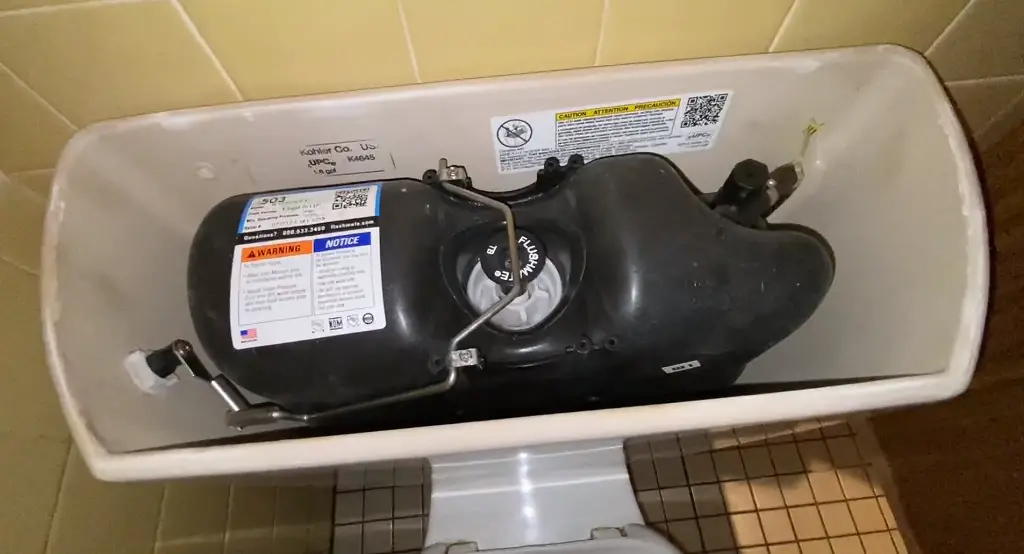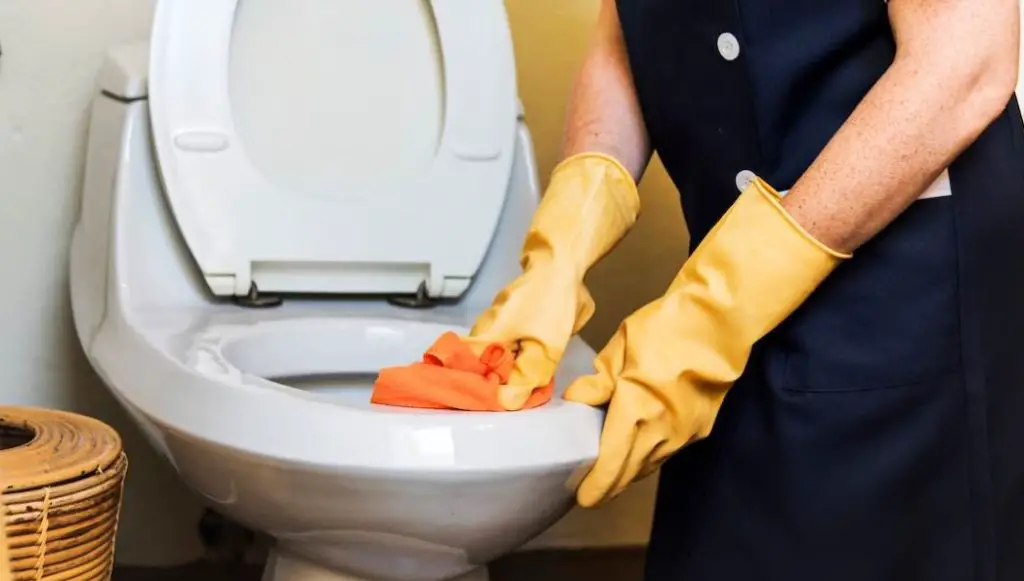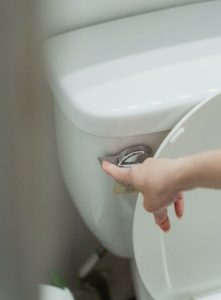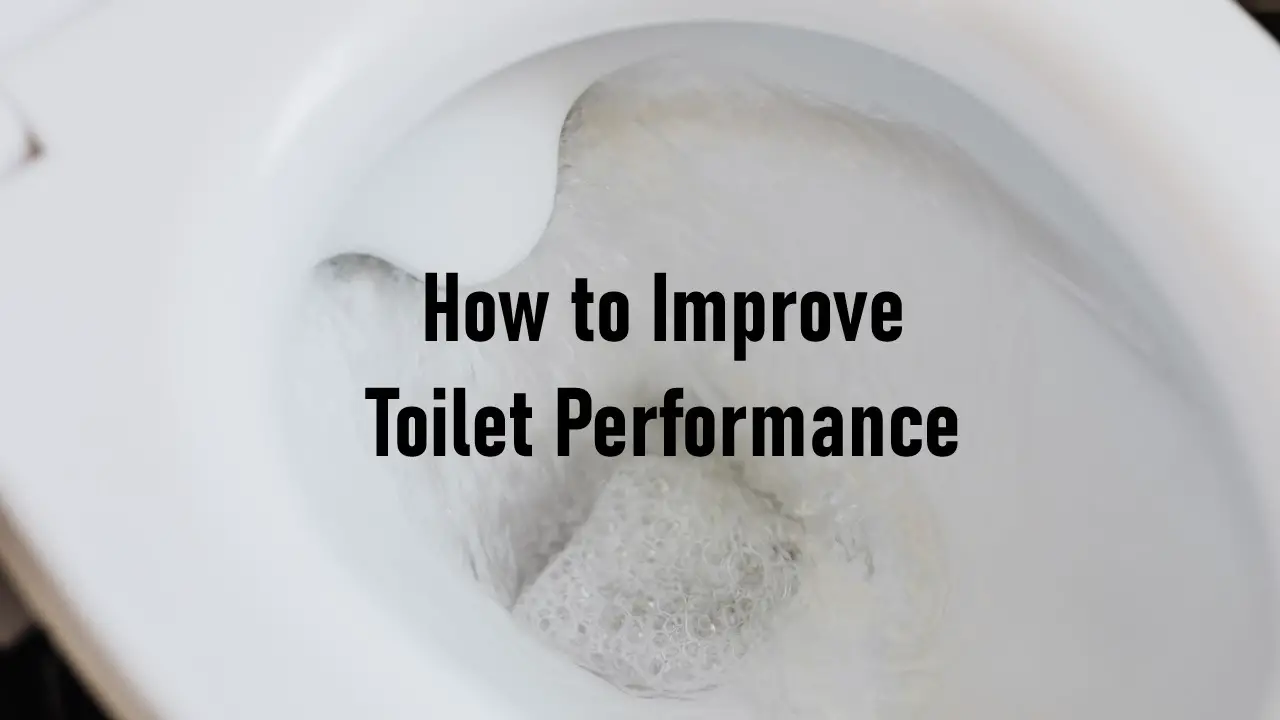Toilet flush performance is an essential aspect of any bathroom. A weak flush can be a frustrating experience, causing clogs and other plumbing issues. Fortunately, there are several ways to improve toilet performance and efficiency.
One of the most common causes of poor toilet flush performance is a clogged drain or P-trap. If the bowl is not draining correctly, it is likely due to a blockage in the drain. The first step to improving toilet performance is to check for clogs in the drain and P-trap. If there is a blockage, a plunger or plumber’s snake can be used to clear it out.
Another factor that can affect toilet flush performance is the water level in the tank. If the water level is too low, it can result in a weak flush. Adjusting the water level in the tank can help improve the flush performance. Additionally, cleaning the rim jets and replacing the flapper can also help improve toilet efficiency.
Overall, improving toilet flush performance is a simple process that can be achieved through a few easy steps. By checking for clogs, adjusting the water level, and cleaning the rim jets, anyone can improve the efficiency of their toilet flush and avoid frustrating plumbing issues.
Page Contents
Identifying and Solving Common Toilet Problems

Toilet problems can be frustrating, but most of them are easy to diagnose and fix. By learning how to identify and solve common toilet problems, you can save money on plumbing bills and keep your bathroom running smoothly.
Dealing with a Weak Flush
If your toilet has a weak flush, it may not be able to clear waste effectively. This can be caused by a variety of issues, including a clogged or partially clogged toilet, a low water level in the tank, or a malfunctioning flapper valve. To fix a weak flush, try the following:
- Check the water level in the tank. If it is low, adjust the fill valve to increase the water level.
- Check the flapper valve. If it is worn or damaged, replace it with a new one.
- Use a plunger to clear any clogs or partial clogs in the toilet.
Solving Clogs and Partial Clogs
A clogged toilet can be a messy and unpleasant problem, but it is usually easy to fix. If your toilet is clogged, try the following:
- Use a plunger to clear the clog. Place the plunger over the drain hole and pump it up and down vigorously to create suction and dislodge the clog.
- If the plunger doesn’t work, try using a toilet auger. Insert the auger into the drain hole and turn the handle to break up the clog.
- If the toilet is only partially clogged, try flushing it with a bucket of hot water. Pour the water into the bowl and let it sit for a few minutes before flushing.
Handling a Toilet That Won’t Flush Properly
If your toilet won’t flush properly, it may be due to a variety of issues, including a worn flapper valve, a blocked drain line, or a malfunctioning fill valve. To fix a toilet that won’t flush properly, try the following:
- Check the flapper valve. If it is worn or damaged, replace it with a new one.
- Check the drain line. If it is blocked, use a toilet auger to clear the blockage.
- Check the fill valve. If it is malfunctioning, replace it with a new one.
The Role of a Plunger and Toilet Auger
A plunger and toilet auger are essential tools for any homeowner to have on hand. A plunger can be used to clear clogs and partial clogs in the toilet, while a toilet auger can be used to clear more stubborn clogs in the drain line. To use a plunger, place it over the drain hole and pump it up and down vigorously to create suction and dislodge the clog. To use a toilet auger, insert it into the drain hole and turn the handle to break up the clog.
In some cases, toilet problems may require the services of a professional plumber. If you are unable to diagnose or fix the problem yourself, don’t hesitate to call a plumber for assistance.

Improving the Flushing Power
Toilets are an essential part of any home, and having a toilet that doesn’t flush properly can be frustrating. Luckily, there are several ways to improve the flushing power of your toilet. This section will cover three effective methods to improve your toilet’s flushing power: adjusting the water level, installing a pressure assist toilet, and upgrading to a new toilet with a stronger flush.
Adjusting the Water Level
One of the easiest ways to improve your toilet’s flushing power is by adjusting the water level in the tank and bowl. If the water level is too low, the toilet may not flush properly. On the other hand, if the water level is too high, it may cause the toilet to overflow. To adjust the water level, you can use the fill valve located in the tank.
To adjust the water level, turn off the water supply to the toilet and flush it to drain the tank. Next, locate the fill valve and adjust it to raise or lower the water level in the tank. You can also adjust the float to control the water level in the tank. Once you have adjusted the water level, turn the water supply back on and test the toilet’s flushing power.
Installing a Pressure Assist Toilet
Another effective way to improve your toilet’s flushing power is by installing a pressure assist toilet. A pressure assist toilet uses compressed air to create a powerful flush. These toilets are more expensive than standard toilets, but they are worth the investment if you want a toilet with a strong flush.
To install a pressure assist toilet, you will need to hire a professional plumber. They will need to install a pressure tank inside the wall behind the toilet. This tank will provide the compressed air needed to create a powerful flush. Once the tank is installed, the plumber will install the pressure assist toilet.
Upgrading to a New Toilet with Stronger Flush
If adjusting the water level and installing a pressure assist toilet do not improve your toilet’s flushing power, it may be time to upgrade to a new toilet with a stronger flush. Newer toilets are designed to use less water while still providing a powerful flush.
When selecting a new toilet, look for one with a high MaP score. MaP stands for Maximum Performance, and it measures a toilet’s flushing power. The higher the MaP score, the better the toilet’s flushing power.
In conclusion, improving your toilet’s flushing power can be achieved through various methods such as adjusting the water level, installing a pressure assist toilet, or upgrading to a new toilet with a stronger flush. By implementing these methods, you can ensure that your toilet is functioning properly and avoid the frustration of a weak flush.

Maintaining Your Toilet for Optimal Performance
To keep your toilet functioning at its best, regular maintenance is key. Here are some tips for maintaining the different parts of your toilet:
The Role and Maintenance of the Flapper
The flapper is a rubber valve that controls the flow of water from the tank to the bowl. If it becomes worn or damaged, it can cause leaks and reduce the efficiency of your toilet. To maintain the flapper, check it regularly for signs of wear and replace it if necessary. It’s also important to ensure that the chain connecting the flapper to the handle is properly adjusted so that it opens and closes smoothly.
Understanding the Toilet Handle Mechanism
The toilet handle is the part of the toilet that is used to flush it. It is connected to a lever that lifts the flapper when it is pushed down. If the handle becomes loose or disconnected, it can cause the toilet to run continuously. To maintain the handle mechanism, check it regularly for signs of wear and tighten any loose connections.
Taking Care of the Fill Valve
The fill valve is responsible for refilling the tank after it has been flushed. If it becomes clogged or damaged, it can cause the toilet to run continuously or not fill up properly. To maintain the fill valve, check it regularly for signs of wear and clean it if necessary. It’s also important to ensure that the water level in the tank is set correctly so that the fill valve can function properly.
The Importance of the Float Ball and Assembly
The float ball and assembly are responsible for controlling the water level in the tank. If they become damaged or misaligned, they can cause the toilet to run continuously or not fill up properly. To maintain the float ball and assembly, check them regularly for signs of wear and ensure that they are properly aligned.
Dealing with Hard Water Issues
Hard water can cause mineral buildup in the toilet tank and bowl, which can reduce the efficiency of the toilet. To deal with hard water issues, consider installing a water softener or using a descaling solution to remove mineral buildup.
Cleaning with Vinegar and Bleach
Regular cleaning of your toilet is important for maintaining optimal performance. Vinegar and bleach are both effective cleaners that can be used to remove stains and kill bacteria. To clean your toilet with vinegar, pour a cup of vinegar into the bowl and let it sit for several hours before scrubbing and flushing. To clean your toilet with bleach, pour a cup of bleach into the bowl and let it sit for several minutes before scrubbing and flushing.
By following these tips, you can keep your toilet functioning at its best and avoid costly repairs down the line.
Frequently Asked Questions

How can I improve the flow of my toilet?
If your toilet is not flushing properly, there are several things you can do to improve its performance. First, check the water level in the tank. If it is too low, adjust the float so that more water fills the tank before the fill valve is turned off. This will increase the amount of water available for flushing and improve the flow.
Another common cause of poor toilet flow is clogged feed holes. These are the small holes located under the rim of the bowl that allow water to flow into the bowl during flushing. Over time, these holes can become clogged with mineral deposits, mold, or bacteria. To clean them, use a wire hanger or a small brush to gently scrub the holes and remove any debris.
Why is toilet not flushing strongly?
A weak flush can be caused by several factors. One common cause is a clogged drain or sewer line. Over time, waste and debris can build up in the pipes, reducing the flow of water and making it harder for the toilet to flush properly. If this is the case, you may need to call a plumber to have the pipes cleaned.
Another cause of weak flushing is a malfunctioning flapper valve. This is the rubber seal that sits at the bottom of the tank and allows water to flow into the bowl during flushing. If the flapper valve is worn or damaged, it may not seal properly, causing water to leak out of the tank and reducing the amount of water available for flushing. To fix this, replace the flapper valve with a new one.
How to adjust toilet flush pressure?
If your toilet is flushing too weakly or too strongly, you may need to adjust the flush pressure. To do this, locate the fill valve in the tank. This is the device that controls the flow of water into the tank. To increase the flush pressure, turn the adjustment screw on the fill valve clockwise. To decrease the pressure, turn the screw counterclockwise. Be careful not to turn the screw too far, as this can damage the fill valve or cause the tank to overflow.

